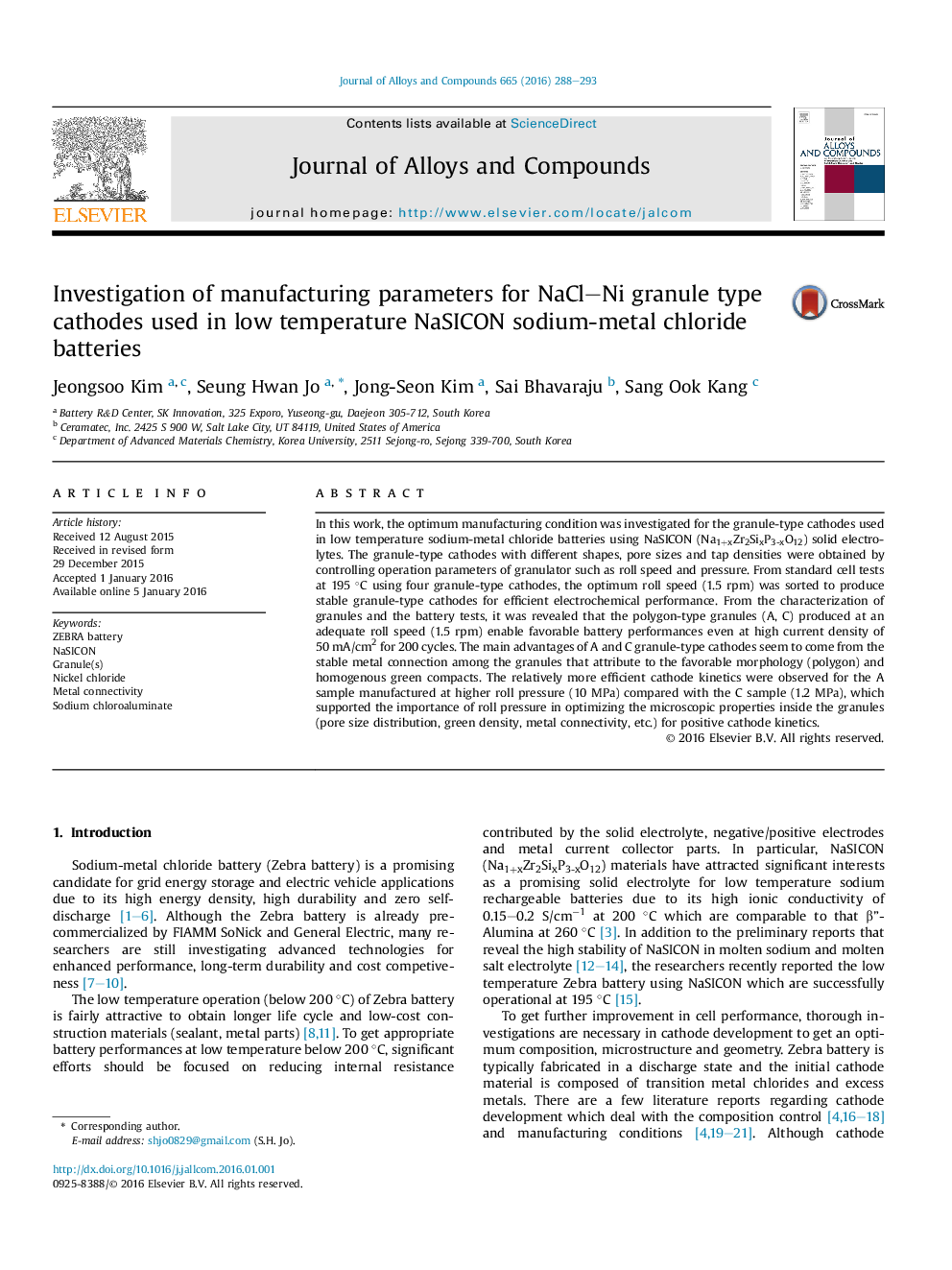| کد مقاله | کد نشریه | سال انتشار | مقاله انگلیسی | نسخه تمام متن |
|---|---|---|---|---|
| 1606837 | 1516228 | 2016 | 6 صفحه PDF | دانلود رایگان |

• The granule-type cathodes for Zebra battery were prepared by a roll compaction method.
• The roll speed is critical to produce sound granules with good metal connectivity.
• Polygon-shape granules enable favorable battery performances.
• We have proved the stable performance of low temperature Zebra battery with NaSICON.
In this work, the optimum manufacturing condition was investigated for the granule-type cathodes used in low temperature sodium-metal chloride batteries using NaSICON (Na1+xZr2SixP3-xO12) solid electrolytes. The granule-type cathodes with different shapes, pore sizes and tap densities were obtained by controlling operation parameters of granulator such as roll speed and pressure. From standard cell tests at 195 °C using four granule-type cathodes, the optimum roll speed (1.5 rpm) was sorted to produce stable granule-type cathodes for efficient electrochemical performance. From the characterization of granules and the battery tests, it was revealed that the polygon-type granules (A, C) produced at an adequate roll speed (1.5 rpm) enable favorable battery performances even at high current density of 50 mA/cm2 for 200 cycles. The main advantages of A and C granule-type cathodes seem to come from the stable metal connection among the granules that attribute to the favorable morphology (polygon) and homogenous green compacts. The relatively more efficient cathode kinetics were observed for the A sample manufactured at higher roll pressure (10 MPa) compared with the C sample (1.2 MPa), which supported the importance of roll pressure in optimizing the microscopic properties inside the granules (pore size distribution, green density, metal connectivity, etc.) for positive cathode kinetics.
Journal: Journal of Alloys and Compounds - Volume 665, 25 April 2016, Pages 288–293